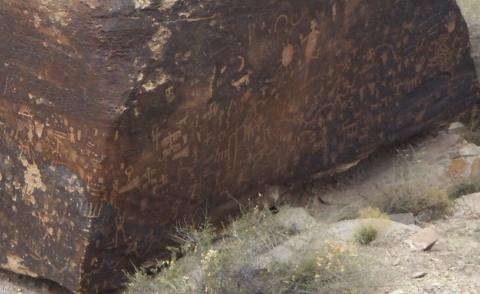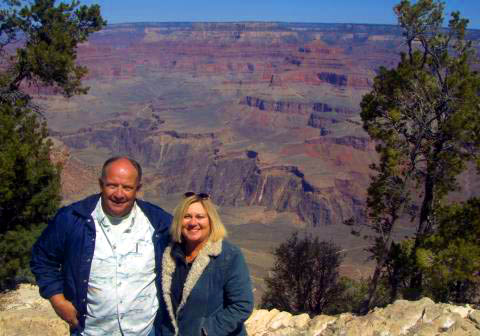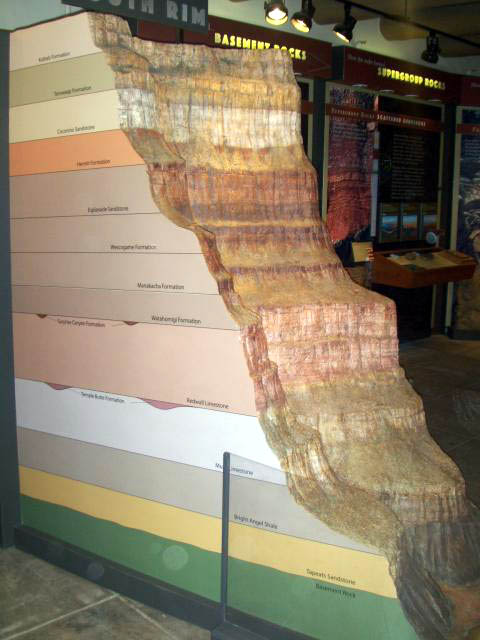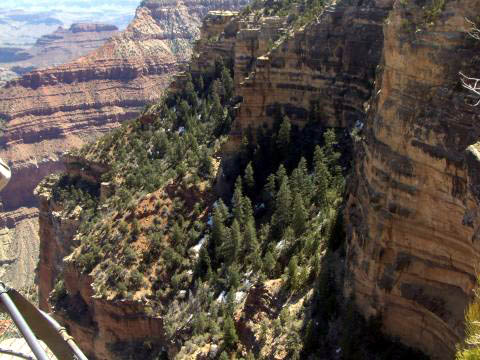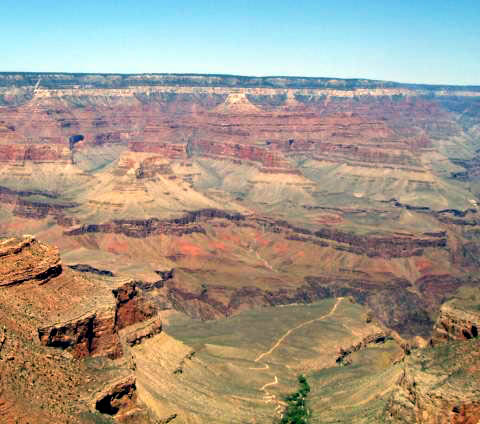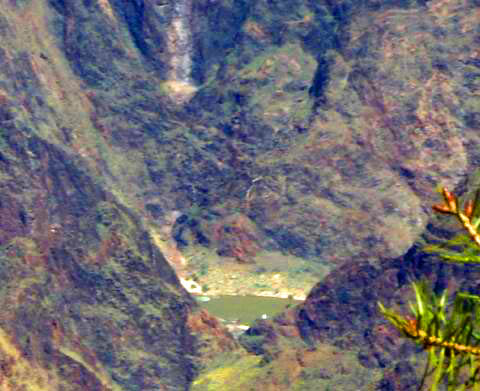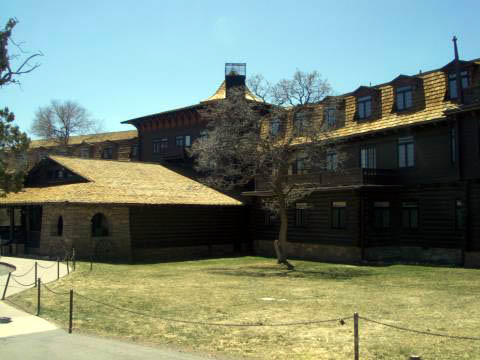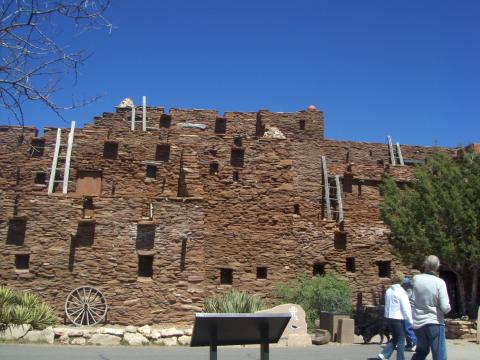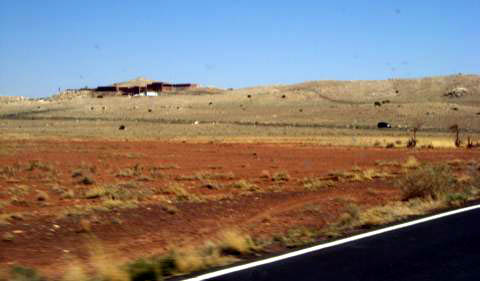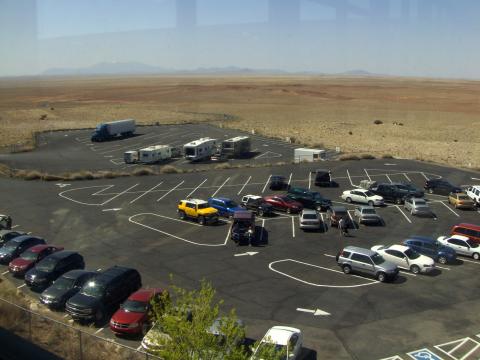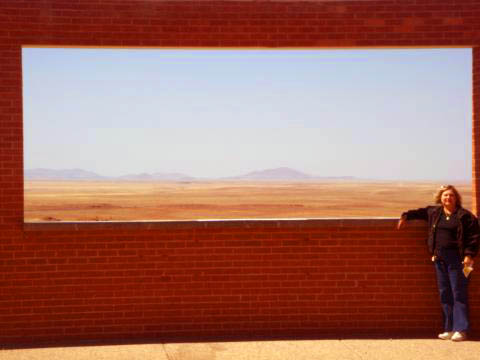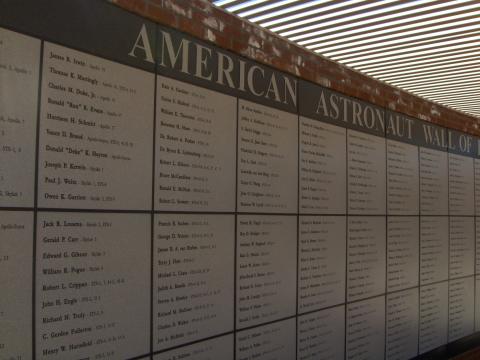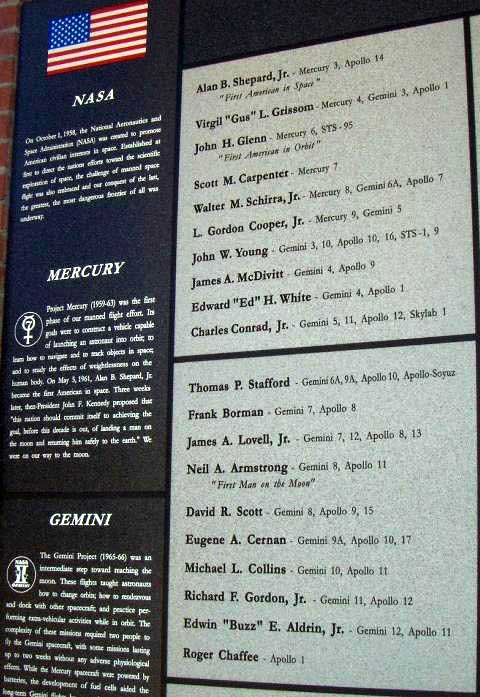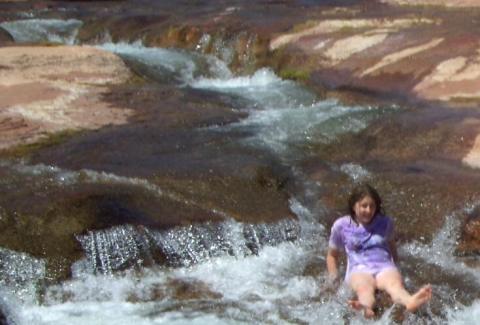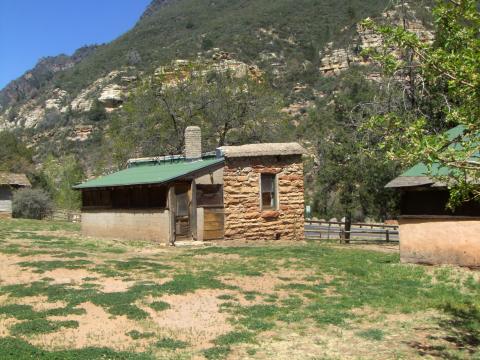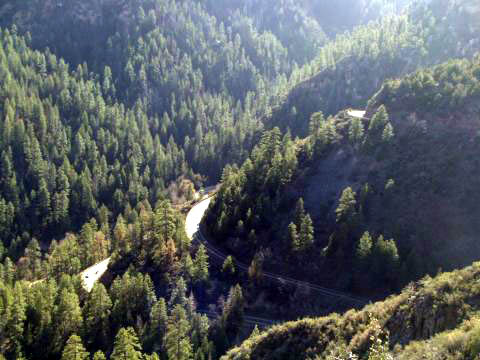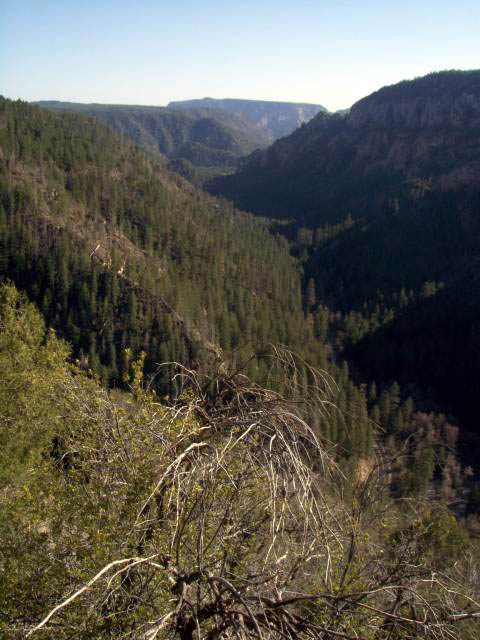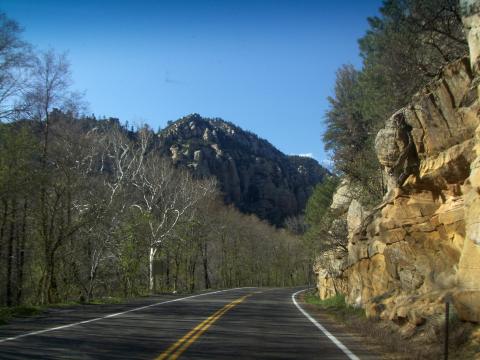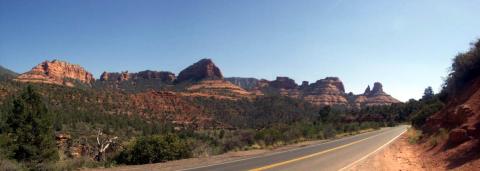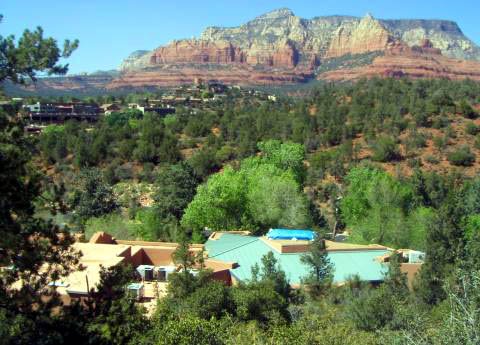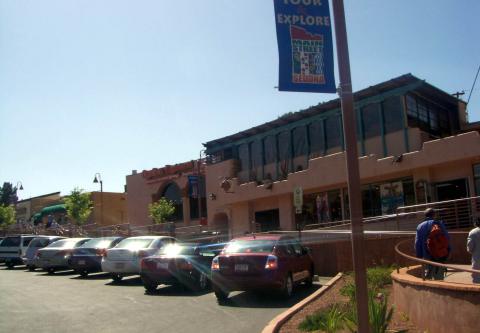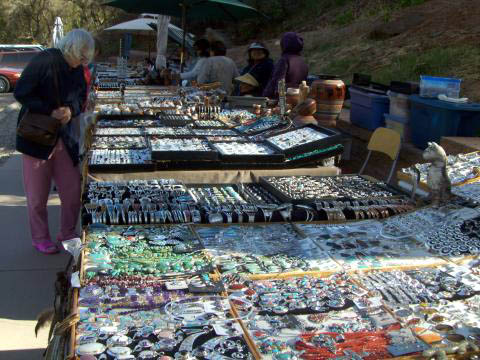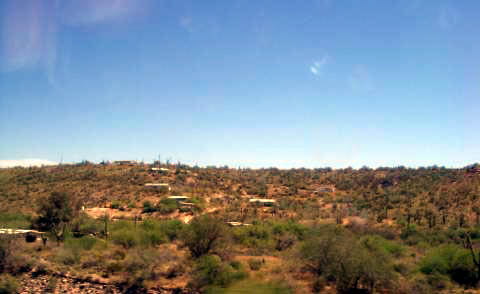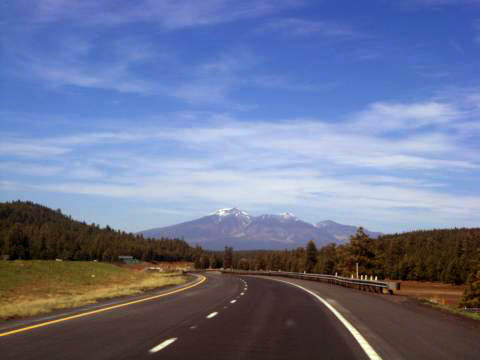Well, you can see that we’ve been on the move. We just arrived in Weatherford, TX, our old stomping grounds, to tend to doctors and swap things in and out of storage. While here, we’ll visit with friends and family.
On our way from Flagstaff we stopped in Holbrook, Arizona so that we could take a look at The Painted Desert and The Petrified Forest. The Painted Desert covers over 93,000 acres and stretches from the Grand Canyon to the Petrified Forest near Holbrook in eastern Arizona.
THE PAINTED DESERT
The National Park Service has set up a park east of Holbrook that curves through scenic areas of the Painted Desert and crosses Interstate 40 to meander through the Petrified Forest and ends up in Holbrook. Once again, Tinka’s lifetime senior pass to the National Parks came in handy.
The park can be entered from either end, but we elected to enter on the east end just north of I-40. The museum just past the entrance is a good place to pick up literature and information about the park. After the museum we were greeted with fantastically beautiful panoramas.
You can click on the above picture to enlarge. What makes up the color are layers of mud, sandstone, and volcanic ash in combination with various minerals. Unfortunately the overcast skies didn’t help capture the beauty of the landscape.
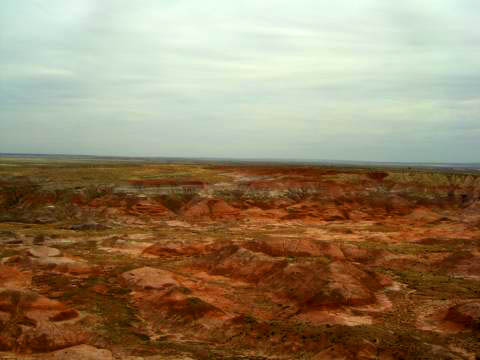
Over 93,000 acres of the Painted Desert were developed later than the Grand Canyon. The fossil record in this area traces back to the Triassic Period, about 220 million years ago.
As we followed the park road across I-40, toward the south, we arrived at the Puerco Pueblo Ruins. This was a community that was populated between about 1250 AD to 1380 AD and located near the Puerco River. The residents of this community had contact with the Zuni Indians from the mountains and the Hopi Indians from the deserts.
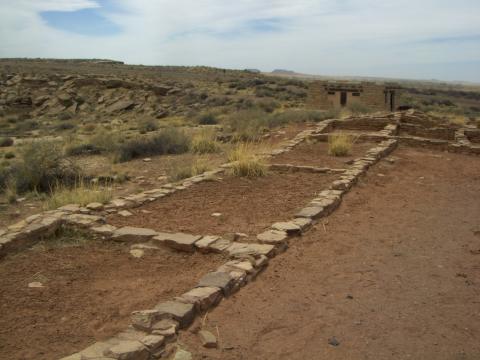
The ruins of the Puerco Pueblo overlook the valley and river below. (The restroom in the background is a little more recent.)
Just below the ruins we found rocks adorned with ancient petroglyphs.
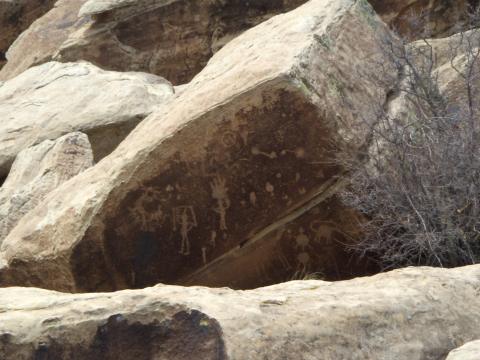
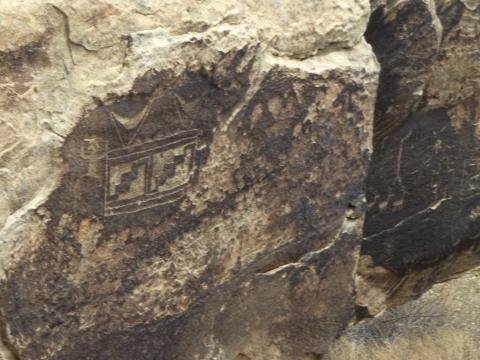
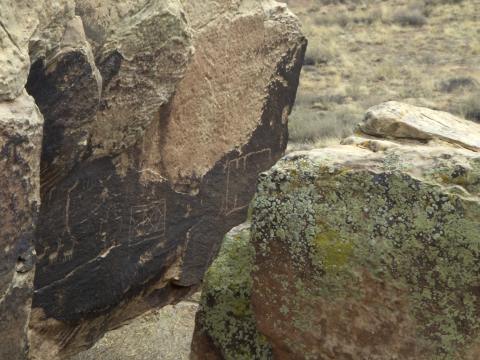
Several miles from the Puerco Pueblo, in the midst of the Petrified Forest, we found a display of more petroglyphs.
This is known as Newspaper Rock. It contains over 1000 petroglyphs. Click on photo to enlarge.
THE PETRIFIED FOREST
The Petrified Forest is amazing. Years ago, when this area was a tropical forest, fallen trees were swept downstream and were covered with sediment. In the ensuing hundred years or so, the wood was replaced with various crystals forming the rocks known as petrified wood. Had the wood been exposed to the air it would have simply rotted away. Years later, erosion exposed the petrified wood.
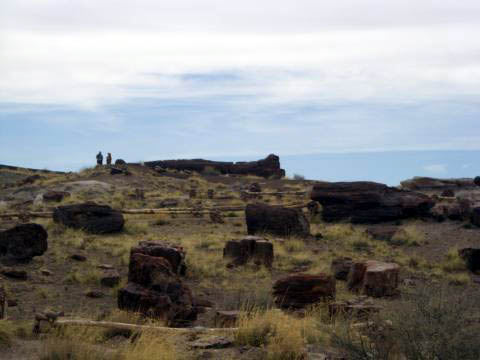
You can see the size of these logs in comparison to the people standing beside the one at the top of the hill.
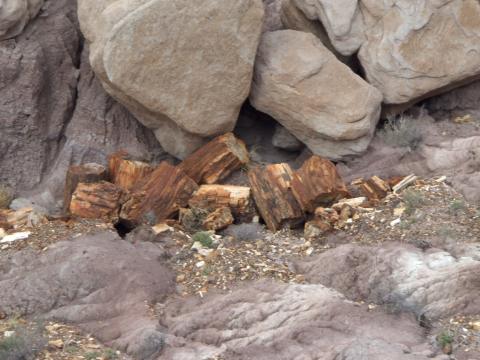
The landscape varies from one extreme to the other, but the petrified wood can be found scattered about in all areas of the park.
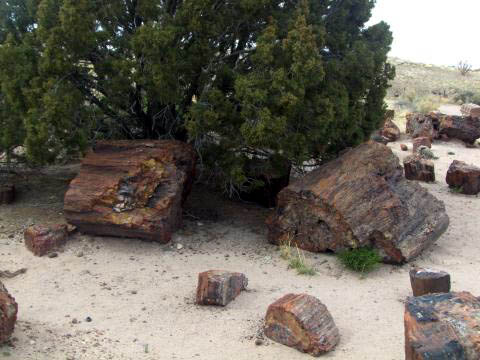
The petrified wood looks like it has been sawed from larger logs. In fact, the “wood” is so brittle that it has broken as the earth shifted around it over the eons.
Near the end of our tour we found another museum iwithn the park that showed examples of fossils and animals that date back to the Triassic Period.
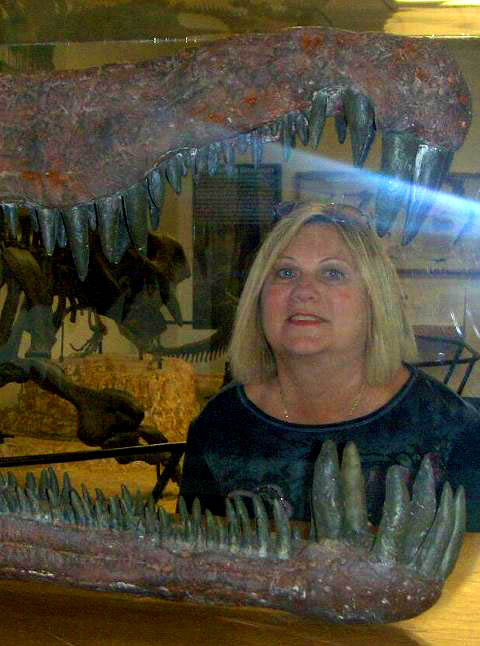
Tinka is examining the skull of a Leptosuchus Gregorii, a 17 foot, 2100 pound alligator type former resident of the area.
It is illegal to take any petrified wood from the park and your vehicle may be inspected at the exit.
That said, you can buy petrified wood from just about anyone that lives in the area. The RV park (Root 66 RV Park) even had a shop.
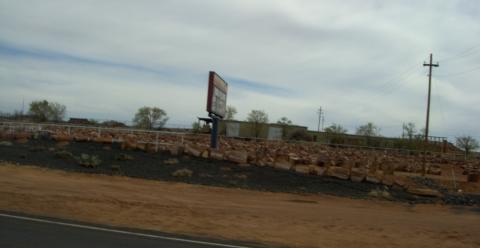
Outside the park, on the south side of Holbrook, there are many petrified wood merchants. This one had fields of petrified wood and fossils for sale.
For more information, and probably better pictures, of the Painted Desert and the Petrified Forest visit: http://www.nps.gov/pefo/
ROUTE 66
We had been traveling along Interstate 40 for quite some time. Business I-40 at most towns was formerly the historical Route 66 and is usually the main street of most of the towns.
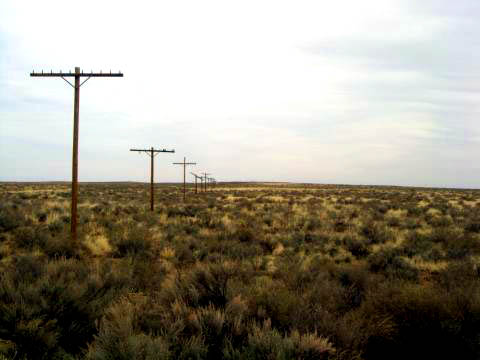
In some areas, only the telephone poles remain where Route 66 used to be.
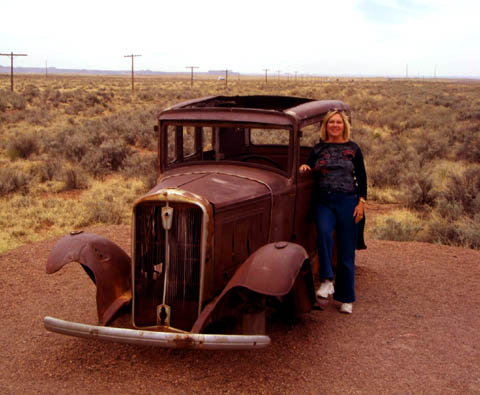
Old cars can be found throughout the area.
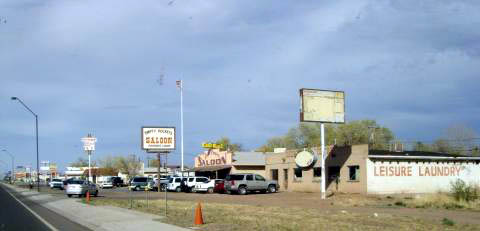
It seems that all the buildings along Route 66 were all built at about the same time.
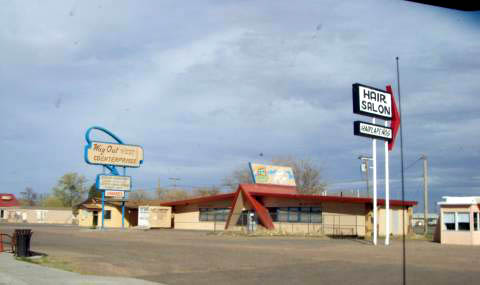
It appears that the sign posts remain but the message may have changed. The sign of the left is for Wayout West CD’s.
If you are a fan of Oprah’s, you may have seen her show series last year when she and her friend Gail drove across the country. One of their stops was in Holbrook and the Wigwam Motel. (CLICK ON PHOTO TO ENLARGE)
I’m not sure whether Oprah and Gail spent the whole night there, but the motel rooms are actually wigwams that are scattered around the property. Check out the age of the cars that are parked near the wigwams. They are permanent fixtures.
On our way to Texas, we also stopped for a visit in Santa Fe and Taos. We’ll talk a little about that on our next entry.


